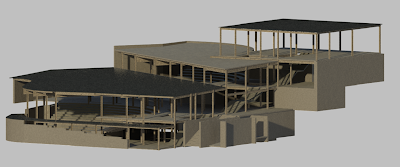After spending nigh on a decade at an excellent consulting firm, doing a bit of this and that, I decided to transition out of that world and into the construction world.
To be specific, the precast concrete world.
All new to me.
I knew one thing...I did NOT want to start off this new position using the same old 2D drafting program that we all love and hate. After spending nearly five years implementing Inventor to create construction documents, the last thing I wanteed to do was go back to using 2D drafting package to detail and extract materials.
I wanted to continue working with 3D representations which can be then be leveraged to both extract materials and create the construction documents, or in my case, production and erection documents.
Ten years, a lot has changed with Revit. This blog will (hopefully) document the learning process as I attempt to create an engineering and detailing department from ground zero while leveraging Revit to assist in the process.
What I learned this month, how to properly add in the weight with units to a schedule for a generic model.
First off...just like Inventor, Revit is unit aware.
The key is creating a field with the proper units.
The Structural Discipline contains the proper type.
Provide a memorable name and the proper formula.
You can then select the desired units from the Formatting tab.
Units with the value!
That's all for this post, more to follow.















